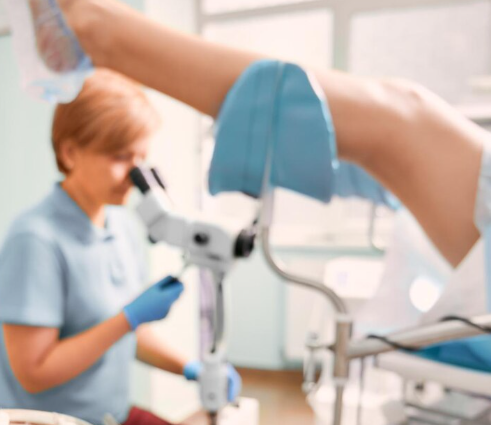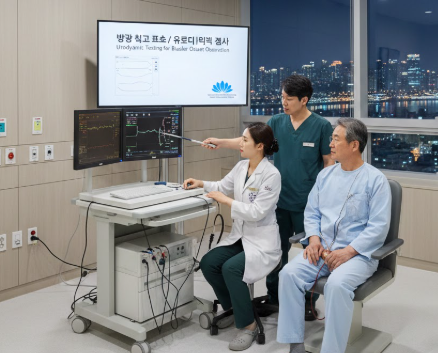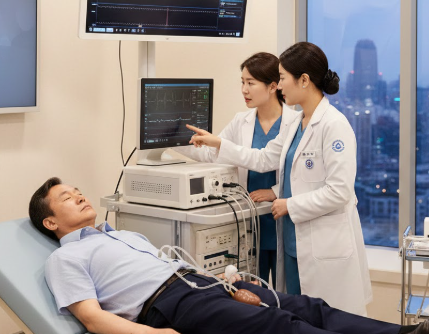Treatment Overview
The Precision-Guided Laparoscopic Ovarian Cyst Surgery in Korea represents the forefront of modern gynecologic surgery, combining cutting-edge imaging, high-definition laparoscopy, and computer-assisted guidance for accurate ovarian cyst removal. This technique is designed to achieve maximum precision with minimal tissue disruption, ensuring both functional and cosmetic excellence.
Ovarian cysts are common benign growths that can cause pelvic discomfort, hormonal imbalance, menstrual irregularities, or fertility issues. While many cysts resolve spontaneously, complex or symptomatic ones often require surgical removal. Korean hospitals have developed precision-guided laparoscopic techniques that enhance surgical visualization and accuracy—reducing complications and preserving ovarian function.
Leading Korean hospitals such as Samsung Medical Center, Asan Medical Center, Severance Hospital, CHA Bundang Women’s Hospital, and Ewha Womans University Medical Center integrate robotic navigation, high-definition imaging, and AI-assisted guidance into laparoscopic systems. These innovations make Korea a global destination for women seeking safe, minimally invasive ovarian cyst surgery.
Purpose & Benefits
The primary purpose of Precision-Guided Laparoscopic Ovarian Cyst Surgery is to remove cysts with unparalleled accuracy while preserving the healthy ovarian tissue and reproductive potential. It is particularly beneficial for women seeking fertility-sparing solutions and faster recovery compared to traditional open surgery.
Key benefits include:
- Enhanced Surgical Accuracy: Precision guidance systems assist surgeons in navigating delicate ovarian structures.
- Ovarian Function Preservation: Minimizes trauma to surrounding tissues, ensuring hormonal balance and fertility.
- Reduced Blood Loss: Advanced energy devices coagulate small vessels effectively.
- Minimal Scarring: Tiny incisions offer excellent cosmetic outcomes.
- Lower Risk of Adhesions: Gentle tissue handling and precise dissection reduce internal scarring.
- Short Recovery Time: Most patients resume daily activities within 7–10 days.
- Improved Safety: Real-time imaging ensures maximum visibility and control throughout the procedure.
This advanced surgical approach reflects Korea’s dedication to precision medicine, integrating technology with expert gynecologic care.
Ideal Candidates
Precision-Guided Laparoscopic Ovarian Cyst Surgery is ideal for women who require surgical treatment for ovarian cysts while prioritizing safety, fertility preservation, and quick recovery.
Recommended candidates include:
- Women with persistent, large, or complex ovarian cysts.
- Patients with pelvic pain, bloating, or irregular menstruation caused by cysts.
- Women diagnosed with endometriomas or functional cysts that do not respond to medication.
- Those seeking fertility-preserving surgery.
- Patients who prefer a minimally invasive and advanced technology-based approach.
Preoperative evaluations in Korea typically include transvaginal ultrasound, MRI, and hormonal assessments, ensuring a customized surgical plan tailored to each patient’s reproductive and health needs.
Possible Risks & Complications
While the surgery is extremely safe, patients should be aware of minor risks, such as:
- Bleeding or infection (rare, due to minimally invasive methods).
- Cyst recurrence, depending on hormonal factors or underlying conditions.
- Adhesion formation, although minimized by precision-guided dissection.
- Anesthesia-related complications, which are very rare.
Korean hospitals mitigate these risks with meticulous surgical technique, advanced imaging, and comprehensive postoperative care.
Techniques Used
Korea’s precision-guided laparoscopic ovarian cyst surgery integrates multiple advanced technologies to achieve optimal surgical accuracy and safety:
- High-Definition 3D Laparoscopy: Offers magnified and detailed visualization of ovarian anatomy.
- Intraoperative Ultrasound Guidance: Helps locate cysts precisely within ovarian tissue.
- AI-Assisted Imaging Systems: Support real-time identification of tissue boundaries.
- Laser or Ultrasonic Energy Devices: Ensure fine dissection and coagulation without damaging healthy tissue.
- Microsurgical Reconstruction: Restores ovarian integrity after cyst removal.
This combination of precision imaging and microsurgical skill ensures thorough cyst excision while preserving ovarian function.
Recovery & Aftercare
Recovery from precision-guided laparoscopic ovarian cyst surgery in Korea is typically swift, with minimal discomfort and short hospital stays. Most patients can return home within 1–2 days post-surgery.
Aftercare includes:
- Postoperative monitoring and pain management.
- Early ambulation to prevent blood clots and aid healing.
- Follow-up ultrasound within 4–6 weeks.
- Guidance on hormonal regulation and reproductive planning.
- Regular gynecologic checkups to monitor ovarian health.
Korean hospitals emphasize holistic aftercare, ensuring both physical recovery and emotional reassurance for patients.
Results & Longevity
Precision-guided laparoscopic ovarian cyst removal ensures lasting results with excellent patient satisfaction. Korean studies show high rates of ovarian function preservation, fertility retention, and low recurrence rates.
Expected outcomes include:
- Relief from pelvic discomfort and hormonal symptoms.
- Preservation of ovarian tissue and fertility potential.
- Minimal visible scarring.
- Short downtime with rapid return to normal life.
Long-term outcomes are enhanced through regular follow-up and hormonal balance monitoring, ensuring sustained ovarian health.
Treatment Process in Korea
The precision-guided ovarian cyst removal process in Korea follows a structured, patient-focused approach:
- Consultation: Detailed medical evaluation, imaging, and diagnosis.
- Preoperative Preparation: Custom surgical planning based on cyst type and patient goals.
- Surgery: Laparoscopic removal using precision-guided imaging systems and microsurgical tools.
- Recovery: Short hospital stay and personalized postoperative care.
- Follow-Up: Review of pathology results, hormonal assessment, and fertility guidance.
The seamless integration of technology and expertise ensures both surgical success and patient satisfaction.
Cost Range
The cost of Precision-Guided Laparoscopic Ovarian Cyst Surgery in Korea varies depending on cyst complexity and hospital facilities:
- Standard Laparoscopic Surgery: ₩4,000,000 – ₩6,500,000 KRW ($3,000 – $4,800 USD)
- Precision-Guided Laparoscopic Surgery: ₩8,000,000 – ₩12,000,000 KRW ($6,000 – $9,000 USD)
These costs reflect Korea’s use of advanced medical imaging, robotic guidance, and world-class surgical expertise—all delivered at competitive international pricing.
Popular Clinics for Precision-Guided Laparoscopic Ovarian Cyst Surgery in Korea
- Samsung Medical Center – Renowned for AI-integrated laparoscopic systems.
- Asan Medical Center – Offers advanced fertility-preserving surgical options.
- Severance Hospital (Yonsei University) – Expertise in image-guided gynecologic surgery.
- CHA Bundang Women’s Hospital – Leaders in precision and microsurgical fertility care.
- Ewha Womans University Mokdong Hospital – Focused on women’s minimally invasive health innovation.




